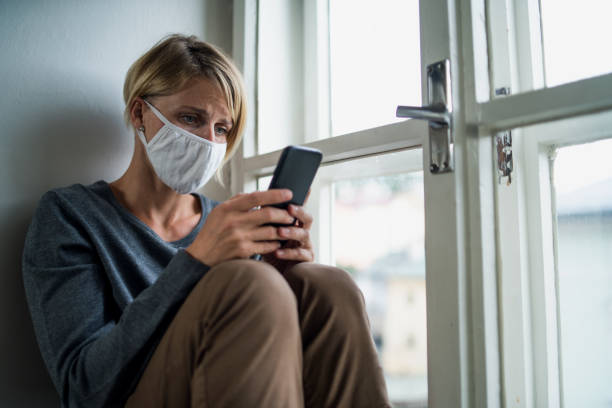Technology has become an integral part of our daily lives, and it has transformed the way we work, communicates, and access information. While technology has brought many benefits and conveniences, it has also brought new challenges that affect our mental health, relationships, and overall well-being. This is where the concept of digital wellness comes in.
Digital wellness refers to the practice of maintaining a healthy and balanced relationship with technology. It involves being mindful of our technology use and making intentional choices about how we engage with digital devices and platforms. Digital wellness encompasses various aspects of our lives, including our mental health, physical health, relationships, and productivity.
The importance of digital wellness in today’s world cannot be overstated. With the increasing use of technology in every aspect of our lives, it’s essential to understand its impact on our well-being and take steps to mitigate the negative effects. By promoting digital wellness, we can harness the benefits of technology while minimizing the risks.
The impact of technology on mental health, relationships, and overall well-being is a complex and multifaceted issue. Research shows that excessive technology use can lead to various mental health problems such as depression, anxiety, and addiction. It can also affect the quality of our relationships and interfere with our sleep patterns, productivity, and creativity. However, technology can also be a powerful tool for promoting well-being and connecting with others.
In this blog, we will explore the impact of technology on mental health, relationships, and overall well-being, and provide strategies for promoting digital wellness in daily life. By understanding the importance of digital wellness and taking practical steps to maintain a healthy relationship with technology, we can lead more fulfilling and balanced lives in today’s digital age.
The Impact of Technology on Mental Health
Technology has brought many benefits to our lives, from instant access to information and communication to new opportunities for entertainment and work. However, the increasing use of technology has also been linked to various mental health problems, such as depression, anxiety, and addiction. Here we will explore the effects of excessive technology use on mental health, the increased risk of mental health problems due to technology use, the role of social media in mental health and addiction, and strategies to promote mental health and well-being in a digital world.
Effects of Excessive Technology Use on Mental Health
Excessive technology use can have a range of negative effects on our mental health. Spending too much time online or engaging in addictive behaviors like gaming or gambling can lead to social isolation, depression, anxiety, and other mental health problems. Constant exposure to screens and blue light can also interfere with our sleep patterns, leading to sleep deprivation, which is linked to a range of mental health problems.
Increased Risk of Mental Health Problems Due to Technology Use
Studies have shown that there is a link between excessive technology use and mental health problems such as depression, anxiety, and addiction. In particular, social media use has been associated with increased feelings of loneliness, anxiety, and low self-esteem. This is because social media often presents an idealized version of reality that can lead to unrealistic comparisons and feelings of inadequacy.
The Role of Social Media in Mental Health and Addiction
Social media addiction is a growing concern, with many people reporting feeling unable to disconnect from their devices and platforms. Social media addiction can lead to a range of mental health problems, including depression, anxiety, and addiction. It can also interfere with our relationships, productivity, and overall well-being.
Strategies to Promote Mental Health and Well-being in a Digital World
There are several strategies that we can use to promote mental health and well-being in a digital world. These include:
- Set boundaries: Establish limits on your technology use, including when and how you use your devices and platforms.
- Practice mindfulness: Be present in the moment and mindful of your technology use, paying attention to how it affects your mood and behavior.
- Take breaks: Schedule regular breaks from your devices and platforms to recharge and reconnect with the real world.
- Seek support: If you are struggling with mental health problems or addiction, seek support from a mental health professional or support group.
Conclusion
Technology has transformed our lives in many ways, but it has also brought new challenges to our mental health and well-being. By understanding the impact of technology on mental health, we can take steps to promote digital wellness and maintain a healthy relationship with technology. Strategies such as setting boundaries, practicing mindfulness, taking breaks, and seeking support can help us stay connected and balanced in a digital world.
The Impact of Technology on Relationships
Technology has transformed the way we communicate and connect with others, offering new opportunities for social interaction and community building. However, the increasing use of technology has also had a significant impact on our relationships, leading to changes in communication patterns and relationship quality. Here we will explore the influence of technology on communication patterns in relationships, the impact of excessive technology use on relationship quality, the role of social media in relationship satisfaction and conflict, and strategies to promote healthy relationships in a digital world.
The Influence of Technology on Communication Patterns in Relationships
Technology has changed the way we communicate with others, offering new ways to connect and interact. However, it has also led to changes in communication patterns in relationships, with many people reporting that technology has made communication more impersonal and less meaningful. For example, texting and instant messaging can be convenient but may lack the emotional depth and intimacy of face-to-face communication.
The Impact of Excessive Technology Use on Relationship Quality
Excessive technology use can have a negative impact on relationship quality, leading to feelings of disconnection, neglect, and resentment. Couples who spend too much time on their devices may struggle to find time for each other and may feel less satisfied with their relationships overall. In addition, excessive technology use can lead to conflicts and misunderstandings, as messages can be misinterpreted or ignored.
The Role of Social Media in Relationship Satisfaction and Conflict
Social media can play a significant role in relationship satisfaction and conflict. On the one hand, social media can provide opportunities for couples to share experiences and connect with each other in new ways. On the other hand, social media can also lead to jealousy, insecurity, and conflicts, especially when one partner feels neglected or excluded. Moreover, social media can also provide a platform for others to interfere with a relationship or for infidelity.
Strategies to Promote Healthy Relationships in a Digital World
There are several strategies that we can use to promote healthy relationships in a digital world. These include:
- Set boundaries: Establish clear boundaries around technology use in your relationship, including when and how you use your devices and platforms.
- Prioritize face-to-face communication: Make time for regular face-to-face communication to strengthen your emotional connection and intimacy.
- Practice empathy and understanding: Be mindful of how technology use affects your partner and try to understand their perspective.
- Limit social media use: Reduce the amount of time you spend on social media and avoid using social media to vent frustrations or air grievances.
Conclusion
Technology has transformed the way we communicate and connect with others, but it has also brought new challenges to our relationships. By understanding the impact of technology on relationships and taking steps to promote healthy communication and connection, we can maintain strong and fulfilling relationships in a digital world. Strategies such as setting boundaries, prioritizing face-to-face communication, practicing empathy and understanding, and limiting social media use can help us build and maintain healthy relationships in the digital age.
The Impact of Technology on Overall Well-Being
Technology has become an integral part of our lives, offering convenience, efficiency, and new ways of working, learning, and connecting with others. However, the increasing use of technology has also had a significant impact on our overall well-being, affecting our physical health, sleep patterns, productivity, and creativity. Here we will explore the relationship between technology use and physical health, the impact of technology on sleep patterns, the influence of technology on productivity and creativity, and strategies to promote overall well-being in a digital world.
The Relationship Between Technology Use and Physical Health
The excessive use of technology can have negative effects on physical health, including increased risk of obesity, back and neck pain, and eye strain. Sedentary activities such as sitting in front of screens for extended periods of time can lead to decreased physical activity levels, while exposure to blue light from screens can disrupt our sleep patterns.
The Impact of Technology on Sleep Patterns
The use of technology before bedtime can disrupt our sleep patterns, leading to difficulties falling asleep, staying asleep, and achieving restorative sleep. The blue light emitted from screens can suppress the production of melatonin, a hormone that regulates our sleep-wake cycle, and the content consumed on screens can cause cognitive arousal, making it difficult to unwind and relax before sleep.
The Influence of Technology on Productivity and Creativity
While technology can increase efficiency and productivity, it can also lead to distractions and decreased creativity. The constant notifications, emails, and messages can interrupt our workflow, causing us to lose focus and productivity. Moreover, the fast-paced nature of technology can create a sense of urgency and pressure to respond quickly, leaving little time for reflection and creative thinking.
Strategies to Promote Overall Well-being in a Digital World
There are several strategies that we can use to promote overall well-being in a digital world. These include:
- Set boundaries: Establish clear boundaries around technology use, such as turning off notifications during designated times, to reduce distractions and increase focus.
- Practice digital detox: Take regular breaks from technology, such as taking a walk or engaging in a creative activity, to reduce stress and promote well-being.
- Prioritize sleep hygiene: Create a sleep-friendly environment by reducing exposure to screens before bedtime, establishing a regular sleep schedule, and ensuring a comfortable sleeping space.
- Incorporate physical activity: Integrate physical activity into your daily routine, such as taking frequent breaks to stretch or engaging in a regular exercise regimen, to promote physical health and reduce sedentary behavior.
Conclusion
Technology has become an integral part of our lives, but it has also brought new challenges to our overall well-being. By understanding the impact of technology on physical health, sleep patterns, productivity, and creativity, and taking steps to promote overall well-being in a digital world, we can achieve a balanced and fulfilling life. Strategies such as setting boundaries, practicing digital detox, prioritizing sleep hygiene, and incorporating physical activity can help us maintain a healthy relationship with technology and promote overall well-being in a digital age.
Promoting Digital Wellness
Digital wellness is becoming increasingly important in today’s world, as we are constantly connected to technology and devices. Promoting digital wellness involves developing healthy habits and boundaries around technology use to maintain a healthy relationship with technology and prevent negative impacts on our mental and physical well-being. Here we will discuss tips for promoting digital wellness in daily life, the role of mindfulness and self-care in digital wellness, and resources for practicing digital wellness.
Tips for Promoting Digital Wellness in Daily Life
- Set boundaries: Establish clear boundaries around technology use, such as designating specific times for checking emails or social media, to reduce distractions and increase focus.
- Take breaks: Take regular breaks from technology throughout the day, such as taking a walk or engaging in a creative activity, to reduce stress and promote well-being.
- Practice mindfulness: Practice mindfulness techniques such as deep breathing, meditation, or yoga to reduce stress and promote a sense of calm and balance.
- Limit screen time: Set limits on screen time, particularly before bedtime, to reduce the impact of blue light on sleep patterns.
- Engage in physical activity: Engage in regular physical activity to promote physical health and reduce sedentary behavior.
The Role of Mindfulness and Self-care in Digital Wellness
Mindfulness and self-care are important practices for promoting digital wellness. Mindfulness involves being present in the moment, cultivating awareness and acceptance of thoughts and feelings without judgment, and reducing stress and anxiety. Self-care involves taking care of oneself physically, emotionally, and mentally, through activities such as exercise, healthy eating, and social support. Practicing mindfulness and self-care can help us develop a healthier relationship with technology and reduce negative impacts on our mental and physical well-being.
Resources for Practicing Digital Wellness
There are several resources available for practicing digital wellness. These include apps, online courses, and workshops that focus on mindfulness, meditation, and self-care. Some popular resources include:
- Headspace: A popular meditation app that offers guided meditations and mindfulness exercises.
- Calm: An app that offers guided meditations, sleep stories, and breathing exercises to promote relaxation and mindfulness.
- Digital Wellness Collective: An online community and resource hub focused on digital wellness and promoting healthy relationships with technology.
- Mindful: A website that offers articles, podcasts, and resources on mindfulness and meditation practices.
Conclusion
Promoting digital wellness involves developing healthy habits and boundaries around technology use to maintain a healthy relationship with technology and prevent negative impacts on our mental and physical well-being. By setting boundaries, taking breaks, practicing mindfulness, limiting screen time, and engaging in physical activity, we can promote digital wellness in daily life. Additionally, resources such as apps, online courses, and workshops focused on mindfulness and self-care can support our efforts to cultivate a healthier relationship with technology and promote overall well-being in a digital world.
In this blog, we have explored the impact of technology on mental health, relationships, and overall well-being, and discussed strategies for promoting digital wellness. It is clear that technology has both positive and negative effects on our lives, and that promoting digital wellness is essential for maintaining a healthy and balanced life.
To summarize the key points of this blog, excessive technology use can have negative impacts on mental health, relationship quality, sleep patterns, and productivity, among other areas. It is important to set boundaries around technology use, take breaks from technology, practice mindfulness, and self-care, limit screen time, and engage in physical activity to promote digital wellness.
Promoting digital wellness is not just about reducing the negative impacts of technology, but also about maximizing the positive aspects of technology for our well-being. For example, technology can support us in connecting with loved ones, accessing health information, and learning new skills. By developing healthy habits and boundaries around technology use, we can make the most of these positive aspects of technology.
In conclusion, promoting digital wellness is essential for maintaining a healthy and balanced life in today’s digital world. By prioritizing our mental and physical well-being, setting boundaries around technology use, and engaging in mindfulness and self-care practices, we can cultivate a healthier relationship with technology and enjoy its benefits while avoiding its negative impacts. Let’s make digital wellness a priority in our lives and encourage others to do the same.





